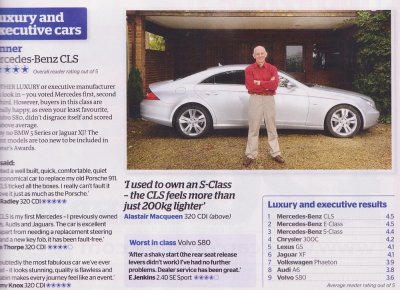Navigation
Install the app
How to install the app on iOS
Follow along with the video below to see how to install our site as a web app on your home screen.
Note: This feature may not be available in some browsers.
More options
You are using an out of date browser. It may not display this or other websites correctly.
You should upgrade or use an alternative browser.
You should upgrade or use an alternative browser.
Wot! Still no Mercedes?
- Thread starter Mactech
- Start date
Page may contain affiliate links. Please see terms for details.
Over the past few months I've been putting together a set of genuine Audi 20" forged summer wheels for the A8. The forged wheels are significantly stronger than cast wheels and normally lighter as the designs can use less thickness in most areas.
Rather than just buy a set with any old tyres, I have been picking up odd cosmetically imperfect rims from all over Europe on eBay. You would be surprised at the number taken off delivery miles cars with very minor marks. Two have been refurbished, and two I considered to be fine after spending some time trying to find the imperfections.....! Best of all, they averaged out at about £160 per wheel (MRP £500). I have fitted a new set of Goodyear As 3 265/40/20 with my favourite SCT acoustic foam bands inside at a cost very similar to the rims.
The 20"wheel and tyre together weigh 24.5kgs. I figured that they would be a similar weight to the 19" cast alloys on the car from standard.
Today I pulled one of the 19's off the car and checked the weight. It is 27.3kgs with 6.5k mile worn tyres.
That means the car will be about 12kgs of unsprung weight lighter when summer arrives.
Experience suggests that will considerably improve the wheel control and probably negate any ride quality reduction of the slightly smaller side wall height.
I'll wait for better weather to find that out, but I'm very happy with the weight reduction by going up a size in wheels!
Rather than just buy a set with any old tyres, I have been picking up odd cosmetically imperfect rims from all over Europe on eBay. You would be surprised at the number taken off delivery miles cars with very minor marks. Two have been refurbished, and two I considered to be fine after spending some time trying to find the imperfections.....! Best of all, they averaged out at about £160 per wheel (MRP £500). I have fitted a new set of Goodyear As 3 265/40/20 with my favourite SCT acoustic foam bands inside at a cost very similar to the rims.
The 20"wheel and tyre together weigh 24.5kgs. I figured that they would be a similar weight to the 19" cast alloys on the car from standard.
Today I pulled one of the 19's off the car and checked the weight. It is 27.3kgs with 6.5k mile worn tyres.
That means the car will be about 12kgs of unsprung weight lighter when summer arrives.
Experience suggests that will considerably improve the wheel control and probably negate any ride quality reduction of the slightly smaller side wall height.
I'll wait for better weather to find that out, but I'm very happy with the weight reduction by going up a size in wheels!
D
Deleted member 113659
Guest
Photos?Over the past few months I've been putting together a set of genuine Audi 20" forged summer wheels for the A8. The forged wheels are significantly stronger than cast wheels and normally lighter as the designs can use less thickness in most areas.
Rather than just buy a set with any old tyres, I have been picking up odd cosmetically imperfect rims from all over Europe on eBay. You would be surprised at the number taken off delivery miles cars with very minor marks. Two have been refurbished, and two I considered to be fine after spending some time trying to find the imperfections.....! Best of all, they averaged out at about £160 per wheel (MRP £500). I have fitted a new set of Goodyear As 3 265/40/20 with my favourite SCT acoustic foam bands inside at a cost very similar to the rims.
The 20"wheel and tyre together weigh 24.5kgs. I figured that they would be a similar weight to the 19" cast alloys on the car from standard.
Today I pulled one of the 19's off the car and checked the weight. It is 27.3kgs with 6.5k mile worn tyres.
That means the car will be about 12kgs of unsprung weight lighter when summer arrives.
Experience suggests that will considerably improve the wheel control and probably negate any ride quality reduction of the slightly smaller side wall height.
I'll wait for better weather to find that out, but I'm very happy with the weight reduction by going up a size in wheels!
Not had all the wheels on the car yet, but they will look like this:
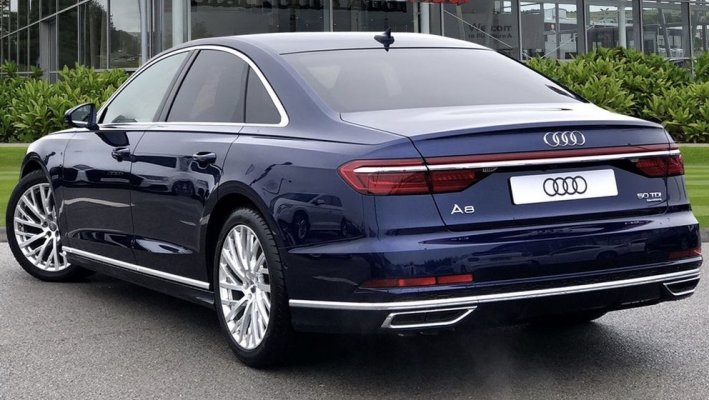
But I'll have to put up with some imperfections a bit like this;
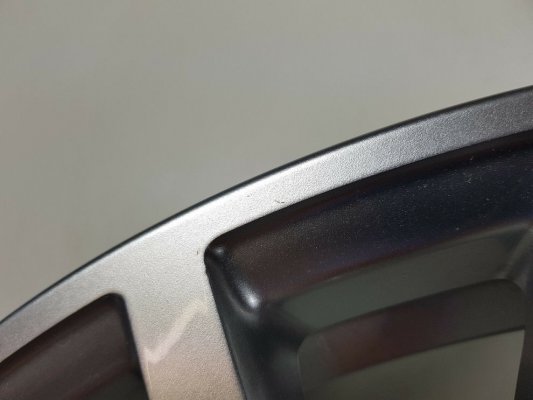
It's on the outer rim, centre of picture. anything else you see is just odd reflections!
goodyear-sct.268854

But I'll have to put up with some imperfections a bit like this;

It's on the outer rim, centre of picture. anything else you see is just odd reflections!
goodyear-sct.268854
Last edited:
- Joined
- Mar 30, 2011
- Messages
- 3,590
- Car
- C63 , E350 CDI, C320 CDI, SQ7
You
Can I order a set of 20” E 63s rims please with minor imperfections.
Hi Mac. You could start a business with all of us as your customers , apply a 30% uplift and it’s still a bargain.Over the past few months I've been putting together a set of genuine Audi 20" forged summer wheels for the A8. The forged wheels are significantly stronger than cast wheels and normally lighter as the designs can use less thickness in most areas.
Rather than just buy a set with any old tyres, I have been picking up odd cosmetically imperfect rims from all over Europe on eBay. You would be surprised at the number taken off delivery miles cars with very minor marks. Two have been refurbished, and two I considered to be fine after spending some time trying to find the imperfections.....! Best of all, they averaged out at about £160 per wheel (MRP £500). I have fitted a new set of Goodyear As 3 265/40/20 with my favourite SCT acoustic foam bands inside at a cost very similar to the rims.
The 20"wheel and tyre together weigh 24.5kgs. I figured that they would be a similar weight to the 19" cast alloys on the car from standard.
Today I pulled one of the 19's off the car and checked the weight. It is 27.3kgs with 6.5k mile worn tyres.
That means the car will be about 12kgs of unsprung weight lighter when summer arrives.
Experience suggests that will considerably improve the wheel control and probably negate any ride quality reduction of the slightly smaller side wall height.
I'll wait for better weather to find that out, but I'm very happy with the weight reduction by going up a size in wheels!
Can I order a set of 20” E 63s rims please with minor imperfections.
Over this weekend I fitted my 'summer' 20" wheels and it's all good. My initial impressions :
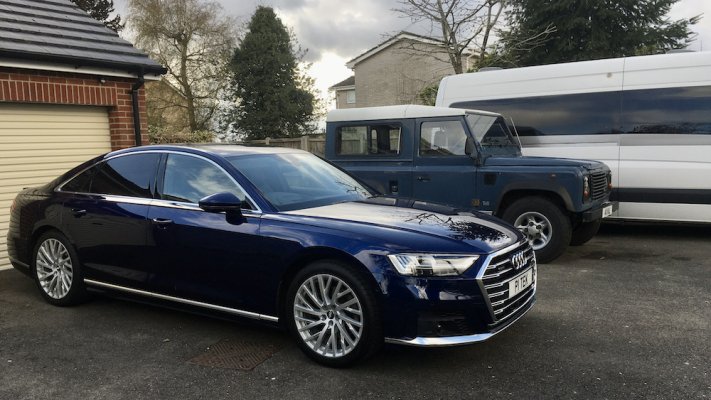
- Handling: The most noticeable change is to the sharpness of the turn in. A 10mm increase in tyre width and a 10mm reduction in sidewall height has made a big difference to the way the car feels much more alive and helps disguise this 2 tonne limo as a Gand Tourer.
- Ride Quality. I think there is just a fraction less compliance in the low speed ride, but this is more than compensated for by the better wheel control over bumps and pot holes. These lighter forged wheels move more quickly up and down and allow the car to remain unruffled over broken surfaces.
- Noise: Same type of Goodyear tyre with SCT, so no surprise that the noise remains well muted. I can't give an exact figure as I have left my stretch of 'calibrated' road 200 miles away with the house move! My ears confirm there is little or no change. I'll search out a new stretch of road at some point.
- Fuel Consumption: I'm not expecting any change as the official figures for the S line and the Black Edition (which runs this tyre size) are the same.
- Rim protection: That 10mm increase of tyre width with the same width of rims (But with slightly thinner flanges duet the strength of the forged rims) means there is now an increase of about 7mm between the side of the tyre and rim. Useful if you brush the kerb whilst parking.

Last edited:
- Joined
- Jan 3, 2013
- Messages
- 7,539
- Car
- AUDI S8 V10, S210 E320 CDI (R.I.P.)
Now that you've had the D5 a while, how are you finding it long term? I am assuming there are no regrets or issues judging from your posts but would be interested to know. The D5 would probably be my replacement in time, once the S8 comes down ( a lot) in price!
I really have nothing bad to report. It is still about 50mm too long for the garage, that has not changed. But nothing like as long as my son's Crafter race van which is currently staying with me as the cottage he is temporarily renting is is actually shorter than the van...Now that you've had the D5 a while, how are you finding it long term? I am assuming there are no regrets or issues judging from your posts but would be interested to know. The D5 would probably be my replacement in time, once the S8 comes down ( a lot) in price!
The restrictions on travel have meant it has only done just over 4k miles with me, but each time I get back behind the wheel I'm reminded of the reasons I bought it. It is a superb way to travel, and with the wheel change has shown it may want to play, something my S Class would never do, what ever wheels
it was wearing.
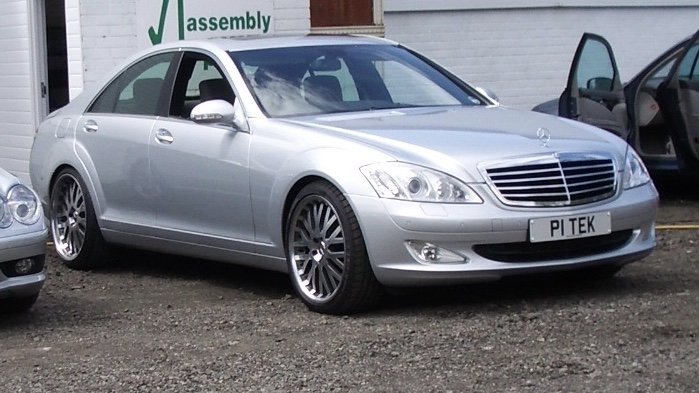
Bellow
Hardcore MB Enthusiast
The first post I have ever read on this forum extolling the dynamic benefits of lower profile tyres!Over this weekend I fitted my 'summer' 20" wheels and it's all good. My initial impressions :
All in all, well happy!
- Handling: The most noticeable change is to the sharpness of the turn in. A 10mm increase in tyre width and a 10mm reduction in sidewall height has made a big difference to the way the car feels much more alive and helps disguise this 2 tonne limo as a Gand Tourer.
- Ride Quality. I think there is just a fraction less compliance in the low speed ride, but this is more than compensated for by the better wheel control over bumps and pot holes. These lighter forged wheels move more quickly up and down and allow the car to remain unruffled over broken surfaces.
- Noise: Same type of Goodyear tyre with SCT, so no surprise that the noise remains well muted. I can't give an exact figure as I have left my stretch of 'calibrated' road 200 miles away with the house move! My ears confirm there is little or no change. I'll search out a new stretch of road at some point.
- Fuel Consumption: I'm not expecting any change as the official figures for the S line and the Black Edition (which runs this tyre size) are the same.
- Rim protection: That 10mm increase of tyre width with the same width of rims (But with slightly thinner flanges duet the strength of the forged rims) means there is now an increase of about 7mm between the side of the tyre and rim. Useful if you brush the kerb whilst parking.
- Joined
- Jan 21, 2005
- Messages
- 27,646
- Location
- Mittel England
- Car
- Smart ForFour AMG Black Series Night Edition Premium Plus 125 Powered by Brabus
If @Mactech A8 has air suspension then perhaps that reduces the impact upon ride, but allows the benefits to be noticed.The first post I have ever read on this forum extolling the dynamic benefits of lower profile tyres!
When I switch between summer and winter wheel set ups on our MLs (295/40 20 versus 295/35 21) I don’t really notice any impact upon ride quality, and I have put it down to them having air suspension.
I have to say, I don’t notice the benefits either, but I drive like a daisy and lack any real driving talent, so I don’t really expect to experience the upsides!
Yes, the big caveat here is that these wheels actually reduced the unsprung weight, the exact opposite of most aftermarket larger rims....The first post I have ever read on this forum extolling the dynamic benefits of lower profile tyres!
Our German mate Herr Suspension has a good part to play in controlling the ride on larger wheels in so much as Mercedes would only supply ML's with 21" rims with Airmatic, a good clue as to what the development engineers found.If @Mactech A8 has air suspension then perhaps that reduces the impact upon ride, but allows the benefits to be noticed.
When I switch between summer and winter wheel set ups on our MLs (295/40 20 versus 295/35 21) I don’t really notice any impact upon ride quality, and I have put it down to them having air suspension.
I have to say, I don’t notice the benefits either, but I drive like a daisy and lack any real driving talent, so I don’t really expect to experience the upsides!
Whilst the air suspension is more clever that conventional springs and dampers, you cannot cheat physics and 30kgs of rotating mass on the end of an axle is bound to be felt in the car to some extent as it tries to pull the car up and down!
Bellow
Hardcore MB Enthusiast
Talking of unsprung mass..... is there a preference on race cars for brake calliper location and does it vary front to rear (assuming their location isn't dictated primarily by aerodynamic concerns)?Our German mate Herr Suspension has a good part to play in controlling the ride on larger wheels in so much as Mercedes would only supply ML's with 21" rims with Airmatic, a good clue as to what the development engineers found.
Whilst the air suspension is more clever that conventional springs and dampers, you cannot cheat physics and 30kgs of rotating mass on the end of an axle is bound to be felt in the car to some extent as it tries to pull the car up and down!
Yes! In an ideal world they will be inside the wheelbase and as low as possible. In the real world they tend to dictated by suspension pick up points and aerodynamics whilst retaining the lowest possible C of G.Talking of unsprung mass..... is there a preference on race cars for brake calliper location and does it vary front to rear (assuming their location isn't dictated primarily by aerodynamic concerns)?
Bellow
Hardcore MB Enthusiast
At the front, whether they are ahead or behind the steering axis will make them either detract or contribute (respectively) to the steering effort in a turn due to their own mass being acted on centrifugally. Is the effect significant? And even if it is and unavoidable - does it fall into the 'we pay a driver to deal with it' category?Yes! In an ideal world they will be inside the wheelbase and as low as possible. In the real world they tend to dictated by suspension pick up points and aerodynamics whilst retaining the lowest possible C of G.
Dryce
Hardcore MB Enthusiast
- Joined
- May 17, 2006
- Messages
- 10,964
- Car
- ..
The first post I have ever read on this forum extolling the dynamic benefits of lower profile tyres!
Well .... he is an Audi driver.
Relative to the loads from the tyre on the steering effort the effect is minuscule.At the front, whether they are ahead or behind the steering axis will make them either detract or contribute (respectively) to the steering effort in a turn due to their own mass being acted on centrifugally. Is the effect significant? And even if it is and unavoidable - does it fall into the 'we pay a driver to deal with it' category?
...amongst many other things....Well .... he is an Audi driver.
I've had the A8 a year now and done 1100 miles in the past 11days in it's role as 'long distance' car.
EV's intrigue me and I went to try another of them today, but there is no way they could take over the A8's current role.
When figures like this pop up on the the dash and the range is in excess of 780 miles (range plus distance already traveled on this tank full) there is really no competition. Add that to the underdeveloped charging network and the fact the A8 is still the most refined and relaxing way to cover distances.
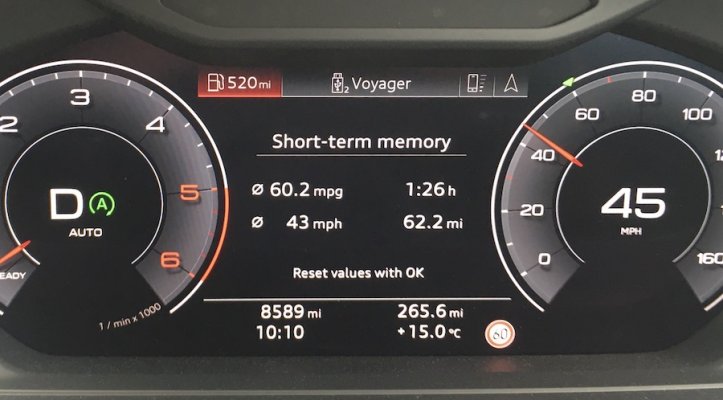
I'm very lucky to have range of cars to do different jobs, as I have learned that there is such thing as a Swiss Army knife of cars.
Maybe if I were in an urban setting and when Vera the Land Rover eventually croaks, then I may reconsider an EV.
As of now, I simply have never driven a better car than the A8 for this role.
I have also gained more respect for the Audi engineers who created the driving modes. After months playing with individual modes, I have come to the conclusion that the 'Auto' mode is best. Not only can it deliver fuel figures as shown, but it will allow instant response with the twitch of a right toe, a great ride and intuitive steering. The car just adapts to your inputs and conditions and provides the right settings at the right time.
The car is rather large and I would ideally prefer a smaller package, but unfortunately no smaller cars can offer the comfort and refinement of the big Audi.
It's not perhaps a car to suit everyone, but I'm fully taken in by its technical genius.
EV's intrigue me and I went to try another of them today, but there is no way they could take over the A8's current role.
When figures like this pop up on the the dash and the range is in excess of 780 miles (range plus distance already traveled on this tank full) there is really no competition. Add that to the underdeveloped charging network and the fact the A8 is still the most refined and relaxing way to cover distances.

I'm very lucky to have range of cars to do different jobs, as I have learned that there is such thing as a Swiss Army knife of cars.
Maybe if I were in an urban setting and when Vera the Land Rover eventually croaks, then I may reconsider an EV.
As of now, I simply have never driven a better car than the A8 for this role.
I have also gained more respect for the Audi engineers who created the driving modes. After months playing with individual modes, I have come to the conclusion that the 'Auto' mode is best. Not only can it deliver fuel figures as shown, but it will allow instant response with the twitch of a right toe, a great ride and intuitive steering. The car just adapts to your inputs and conditions and provides the right settings at the right time.
The car is rather large and I would ideally prefer a smaller package, but unfortunately no smaller cars can offer the comfort and refinement of the big Audi.
It's not perhaps a car to suit everyone, but I'm fully taken in by its technical genius.
My forged wheels are undoubtedly the lightest, strongest, best performing, cost effective and kerb damage tolerant of any 20" wheels I have owned.
However they are a complete PITA to clean
The design has a groove in the rim behind the spokes. Road muck, water and brake dust is centrifuged perfectly into it.
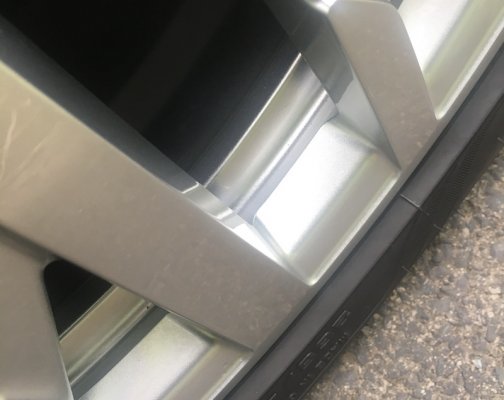
Whilst I have a pressure washer, various sponges and a wheel brush, the only way to clean the inner wheel to my satisfaction is with a cloth coated hooked digit......on every one of the 80 spokes on the car.
I'm beginning to think the it might be quicker to remove the wheels as I would on a race car or when changing summer to winter rims than to clean them as I do currently!
But then again, I'm not actually working against a stopwatch anymore.
However they are a complete PITA to clean

The design has a groove in the rim behind the spokes. Road muck, water and brake dust is centrifuged perfectly into it.

Whilst I have a pressure washer, various sponges and a wheel brush, the only way to clean the inner wheel to my satisfaction is with a cloth coated hooked digit......on every one of the 80 spokes on the car.
I'm beginning to think the it might be quicker to remove the wheels as I would on a race car or when changing summer to winter rims than to clean them as I do currently!
But then again, I'm not actually working against a stopwatch anymore.
Users who are viewing this thread
Total: 2 (members: 0, guests: 2)
Similar threads
- Replies
- 21
- Views
- 967
- Replies
- 186
- Views
- 8K
- Replies
- 472
- Views
- 27K
Share:

